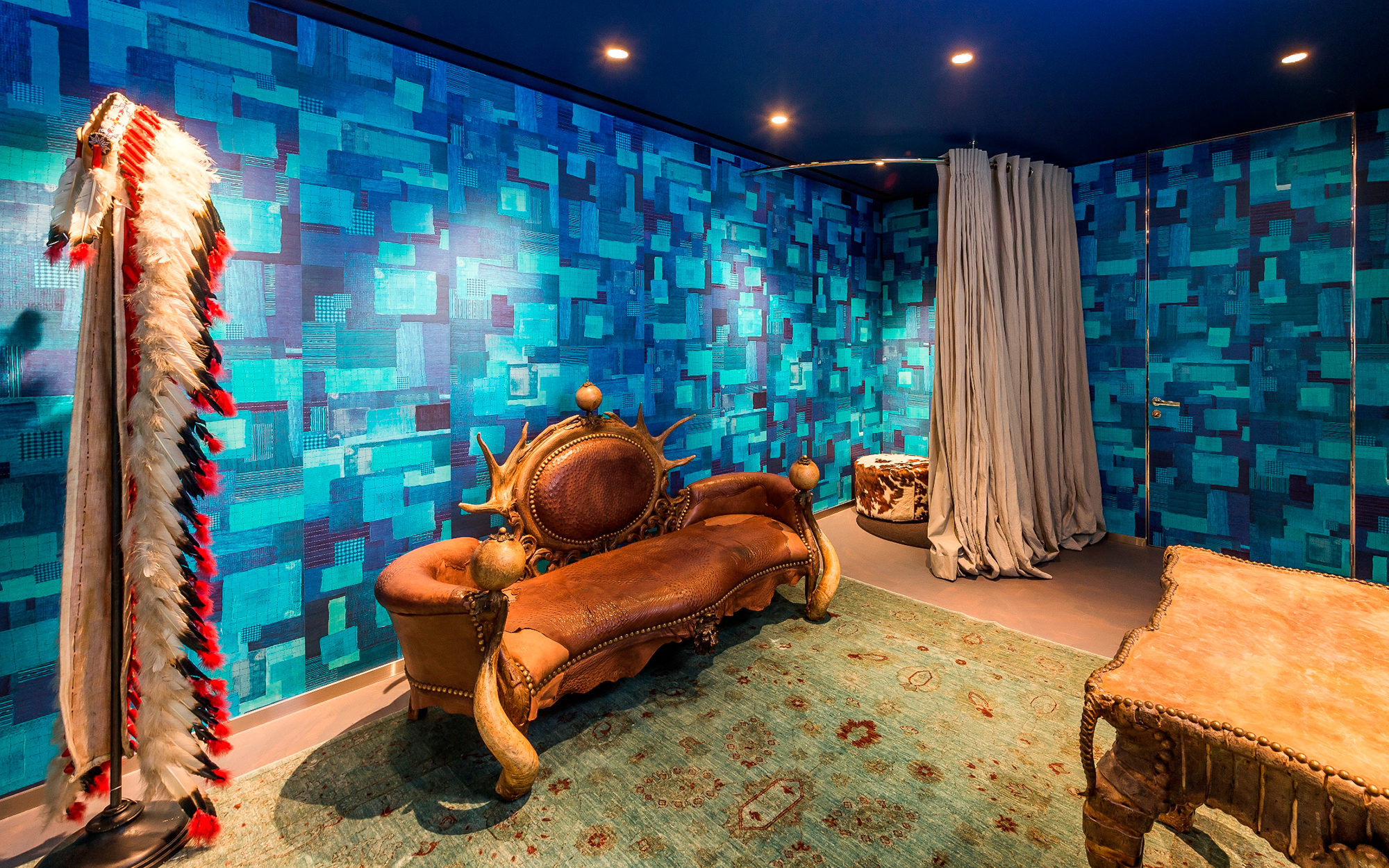Paola Navone wanted to build a stage. One for, as she calls it, “the most forward-thinking fashion in the world.” The Milan-based architect and designer seems to have hit the mark with her full-scale renovation of Joyce Central, the 25,000-square-foot multi-brand emporium in Hong Kong’s business district.
Theatrical flourishes are rare in this chaotic, high-density concentration of lackluster commercial buildings. Little has changed in this neighborhood since Navone lived in Hong Kong in the 1980s and ’90s. Back then, Joyce Central’s founder was already a local heroine. The Shanghai-born, Hong Kong-bred Joyce Ma opened her eponymous boutique in 1970, and immediately began stocking previously unavailable European labels like Giorgio Armani, as well as avant-garde Japanese designers like Issey Miyake and Yohji Yamamoto. She found overwhelming success through the years, growing from one shop into a palace of commerce so great that it was taken public.
In 2000, she sold her stake in the company, but the new owners have upheld Ma’s distinct point of view, continuing to pull from European catwalks while sniffing out globally relevant finds. The store’s painstaking selection and editing process results in an individuality that Navone consciously sought to reflect across each of its four levels. It’s something that comes naturally to the nomadic-minded designer.
To achieve a sense of synergy, Navone worked closely with the Joyce in-house design team. “They know this space so well, and they know designers like Haider Ackermann and Rick Owens, whose clothing will fill it,” she says.
Extra footage discovered during demolition allowed for a new, nearly double-height window on the ground floor. Natural light, rare for Hong Kong, streams in as shoppers enter a walkthrough window display. They pass into the womenswear area under a curtain of retro-inspired silvery white tinsel. Inexpensive and low tech, this demarcation embodies the designer’s guiding philosophy, which she calls “tham ma da.” A Thai expression meaning “everyday,” tham ma da reflects her penchant for challenging notions of ordinary and extraordinary by using humble materials in unexpected ways. (Surface editor-in-chief Spencer Bailey wrote a newly published book of Navone interiors that is named for the expression, out now from Pointed Leaf Press.)
Lighting, color, and texture further demarcate each floor into niches that Navone refers to as galleries. The four on the ground floor encompass a wall of empty price tags, vintage leather pommel horse benches, a steel gray Cappellini sofa, and an eight-foot-tall teddy bear covered in blonde hair. These fantastical spaces give way one flight below to a patchwork of turquoise and cobalt textural overlays that line part of the lower menswear level. Lest anyone feel too coddled by these rich hues, a neon wall sign in an adjacent gallery reads: “Hell is empty and all the devils are here.”
The flexible mezzanine space is designed to host rotating thematic exhibitions, while the top floor is awash in a fanciful river of pink-, grey-, and green-colored resin reflected in copper-clad display tables. The eccentric floor pattern as well as the white-speckled stairwell walls between each floor presented Navone with an idiosyncratic cultural challenge: the Chinese workers resisted splashing and mixing paints, fearing imperfection. Navone gently took a pigment-soaked sponge from the hand of a painter, showing him, instead, that it was meant to have a human touch. “Once I convinced him to dance and have fun,” she says, “he finished quickly, and with perfect imperfection.”
(All Photos: Courtesy Joyce Central.)

